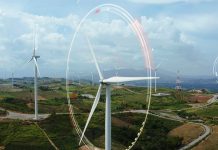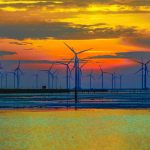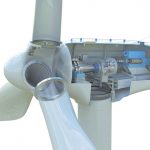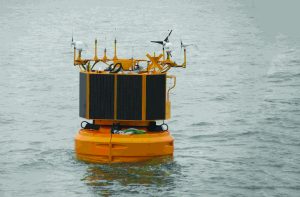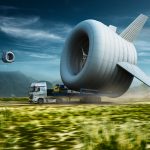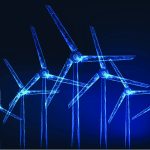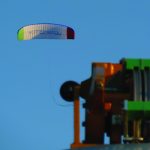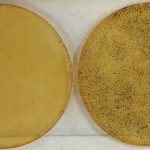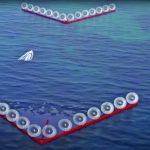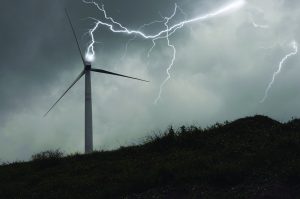Colder climates often have some of the best constant winds needed to spin a turbine. Unfortunately, that frigid air also creates an added challenge for wind-power production: ice buildup on the turbine blades.
According to experts, icing on turbine blades is the No. 1 cause of turbine downtime in cold climates, so it’s really important to develop a strategy to deal with this seasonal hazard.
During a recent webinar conducted by New Energy Update in association with the recent Wind O&M Canada Conference in Toronto, Mark Hachey, site manager with Engie Canada with Caribou Wind Park in eastern Canada, and Charles Godreau, project manager with Nergica Technologies, discussed their experience with turbine icing and some of the best practices to address this before, during, and after an icing event. Godreau’s data was taken from the IEA Wind Test 19, which is an expert group composed of 11 countries. Nergica is the Canadian representative in that group.
“We are kind of in the middle of the Jetstream,” Hachey said. “Fog makes the icing problematic for us.”
Two climates
Two types of climates typically overlap in colder areas, according to Godreau: low-temperature climate and icing climate.
“The low-temperature climate is defined by temperatures below minus-20 degrees Celsius over nine days in a year, or an average air temperature below zero,” he said. “In some cases, that overlaps with icing climate, which is either instrumentalizing for more than 1 percent of the year or meteoroligicalizing during more than 25 percent of the year.”
Most of Canada is considered to be in a low-temperature climate, as well as some of the northern states in the midwestern U.S. As far as icing climate is concerned, eastern Canada is exposed to more icing, according to Godreau.
“As an icing event comes into a wind farm, we have meteoroligicalizing; that would be when we have a meteorological phenomenon — could be fog or precipitation — that is affecting your wind farm,” he said. “And what will happen during that time is there will be a phase of incubation, then accretion will be the moment that ice is building up. And we will distinguish between instrumental icing where your wind sensors and icing detectors will detect icing, and rotor icing, where the wind-turbine blades are covered with ice. Instrumental icing and rotor icing may persist in time. After that meteorological icing — say it lasts a day — you could have icing on the wind farm for several weeks depending on your climate, so the importance of detecting these events and being aware that there is icing on a wind farm is important, especially for health and safety issues.”
Those safety concerns come from the threat of falling ice, according to Hachey.
“Sometimes, the reason we aren’t able to get the turbines running is really a safety issue, meaning it might be a simple problem like you’re not able to get into the turbine because of the risk of falling ice,” he said.
Hachey said that sometimes safety issues, rather than aerodynamic issues, can amount to about 40 to 50 percent of lost production.
Safety hazards are avoided by using a portable ice roof, according to Hachey.
“We’re able to deploy it in order for technicians to get into the turbine safely to do whatever they need to do to get the turbine back in operation,” he said.
Combating ice buildup
There are several families of technologies available in order to combat icing, according to Godreau:
• Models or maps: allow a wind farm operator to know in advance about the possibility of an icing event.
• Detection: Dedicated sensors on site will alert an operator of icing.
• Mitigation: Methods used to remove rotor icing.
Icing forecasts are often available for free from national forecasting agencies, according to Godreau.
Examples of some of those national models are the WRF-ARW, used in the U.S.; the GEM-LAM, used in Canada; and the AROME, available in Europe.
“Since icing is also an issue in aerospace, if you look into airport data or FAA regulations, you’ll have several details on forecasts available and the frequency in which you can look at them,” Godreau said. “I would say if you are looking at operating a wind farm in cold climate, you should look at the proper icing forecasts at least two times a day. It’s just a best practice to be aware of what conditions are coming to your site and if you need to implement some mitigation.”
Godreau said there are also commercial forecast solutions available, so some companies will be able to provide adjusted forecasts at a given site.
Hachey referred to a Canadian government project that was designed to determine icing conditions, until the program was dropped. However, even though the program is no longer active, the data from it is still useful.
“The biggest takeaway for me, however, was when we used this website here and we can predict — looking at the humidity and the precipitation and the temperature — when we’re going to have an icing event,” he said. “So, we can choose to manually pause turbines during the event, or we can keep them running when we think the event is going to be short and ride it through. This has really done a lot for us. It seemed simple, but it was a very useful tool.”
Detecting ice buildup
When it comes to actually detecting the possibility of ice buildup, there are several avenues that wind-farm owners can go down using indirect and direct methods of detection, according to Godreau.
In the indirect arena, operators can use double anemometry, which compares heated and unheated cup anemometer data.
“Based on our experience, you want your heated sensor to be ultrasonic,” Godreau said. “Some of the heated cup anemometers don’t have enough power to melt the ice, so they’ll have faulty readings in icing. And you’ll also need a heated bearing on your unheated cup anemometer because in low temperatures you’ll be getting false alarms. So be aware that non-heated bearings will slow down in low temperatures.”
Power-curve degradation is another indirect detection method.
“Once you have icing on the blade, the turbine will produce less power,” Godreau said.
Another indirect, yet not as reliable, method for detection is by monitoring atmospheric conditions when the temperature is below 2 degrees Celsius and the relative humidity is great than 90 percent.
“Our group does not recommend using this method,” he said. “The reason is that basically in low temperature, the relative humidity sensors are not working properly, and below minus-15, relative humidity on a standard sensor will not even reach 90 percent. So, you should be aware if you are using this, you should look into more precise methods of detection.”
There are a lot of direct methods of detection available on the market that are established in the industry, according to Godreau.
Nacelle-based sensors from companies including Labkotec, MCMS, Goodrich, MPS Icemeter, Leine Linde, New Avionics, and HoloOptics are useful, as well as rotor-based sensors from companies including Eologix, Fos4X, Weidmuller, and Wolfel.
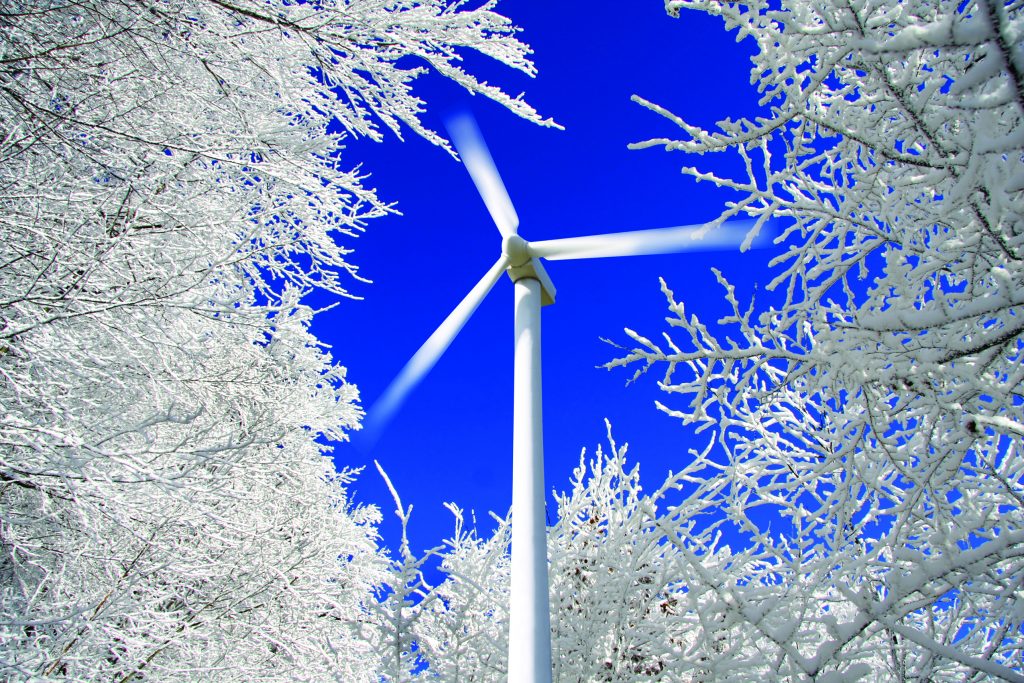
“These work either by measuring the load on the blades, so that you know you have an increased load on the blade, which is caused by icing, or by directly detecting icing on the blades,” Godreau said.
Another direction detection method includes nacelle and hub-based cameras.
Ice mitigation
But the point of predicting and detecting the ice buildup is moot if there aren’t ways to get rid of that power-draining ice once it’s there.
Fortunately, most major OEMs offer de-icing systems, according to Godreau. And for newer wind farms where that technology has been available, icing is more of a fact of life in a cold climate. For older farms, however, there might be a need to retrofit existing turbines with some method of de-icing.
“If you’ve done your site assessment properly, and you know that you have some icing issues and you’ve bought an OEM de-icing system, then that’s fine,” Godreau said. “I guess the main trouble is when you’ve built up your wind farm when either this technology was not available or not knowing you were going to get so much icing. So retro-fitting de-icing systems is something operators in icing climates have been looking at for a while. It used to be that it would be some kind of new system that hasn’t been tried before with some reliability issues and some of them have worked around this.”
Hachey has had some experience with experimenting with different de-icing methods on his wind farm.
One such method was surface-mounted tiles electrically heated and stuck to the blade surface and interconnected.
“This system really didn’t work well for us,” he said. “It wasn’t physically reliable. The electrical connections were made too tight, and when the blade flexed, it pulled apart, causing an open circuit, and in some cases, we actually had some sparking and some blackening of the blade. (In other instances), the adhesive wasn’t strong enough, and some of the tiles simply fell off after a while.”
Hachey also said his farm experimented with painting a set of blades black to see if that could deter ice buildup.
“The biggest concern with that was overheating,” he said. “This was a concern with the manufacturer of the turbine: that if the blade got too hot, it could soften some of the glue of the fiberglass components, causing some damage. It’s doubtful how well this worked; it certainly didn’t work in the middle of the winter.”
Icephobic solutions
Icephobic coatings have also been tried with varying degrees of success, according to Hachey.
“We tried a couple different types of coatings,” he said. “An off-the-shelf component was applied uptower. After three to four icing events, the product significantly dropped off in effectiveness. And that’s kind of what we found. The product worked a little bit during the first icing event, and it did nothing after that … The ice and wind and rain and some snow were able to wear the product down, and by the time we hit winter, there really wasn’t much of the product left.”
Hachey also said his team used a new product from Japan, which had to be applied in a complicated process that involved removing the blades.
“Something else we tried was helicopter spray,” he said. “It worked a little bit but was very slow. We could only fly within certain wind speeds. You can’t fly in the snow or rain. And it’s fairly expensive. So, it wasn’t a cost-effective option.”
Calling the coatings “icephobic” is a bit of a misnomer, according to Godreau.
“You might expect that you won’t have ice buildup, but that’s not exactly correct,” he said. “With these coatings, what they do is reduce the adhesion force between the ice and the coated surface. You basically still need the same things in order to remove the ice: vibrations, gravity, sunshine, which helps melt the ice. Since it reduces the adhesion force, the more ice you have, the better chances of the coating to work. So, when you have a very severe ice buildup, it will fall down from the coated turbine earlier than from an uncoated turbine. There’s some sense of an act of God to it. There could be that there was some kind of gust that helped shed the ice, we can’t really say. But it’s not as effective as an active system. Durability of these coatings is also something that needs to be proven. You may expect a good performance over a couple of winters, but after that you may have to reapply to maintain performance.”
Active systems
A blade-heating system is a prime example of one of these active de-icing systems, according to Godreau and Hachey.
“The next thing we tried was a Vestas blade-heating system,” Hachey said. “It worked in that it eliminated icing that we had seen; however, you’d have to buy 99 blades for the turbines, so there was no economic benefit. Even though the technology was useful, the productive cost was too much to justify.”
Cost is always going to be an added factor when it comes to de-icing, whether that cost comes in the form of forecasts, detection, or the active or passive act of removing the ice buildup. That’s why it’s important to make sure that is considered when building a wind farm in colder climates.
But, luckily, there are plenty of options already on the market with more on the horizon — such as using lasers and microwaves — in the research and development stage, according to Godreau.
And Hachey expects his wind farm to look into more de-icing options in the near future.
“We’re reviewing another surface mounted electric heating system,” he said. “We may try a ground-based ice removal system in the winter of 2019.”
Hachey said he also plans to install fixed ice protection roofs, instead of hauling around protection, since safety hazards are an issue that can often eclipse power production loss.
More info newenergyupdate.com


















